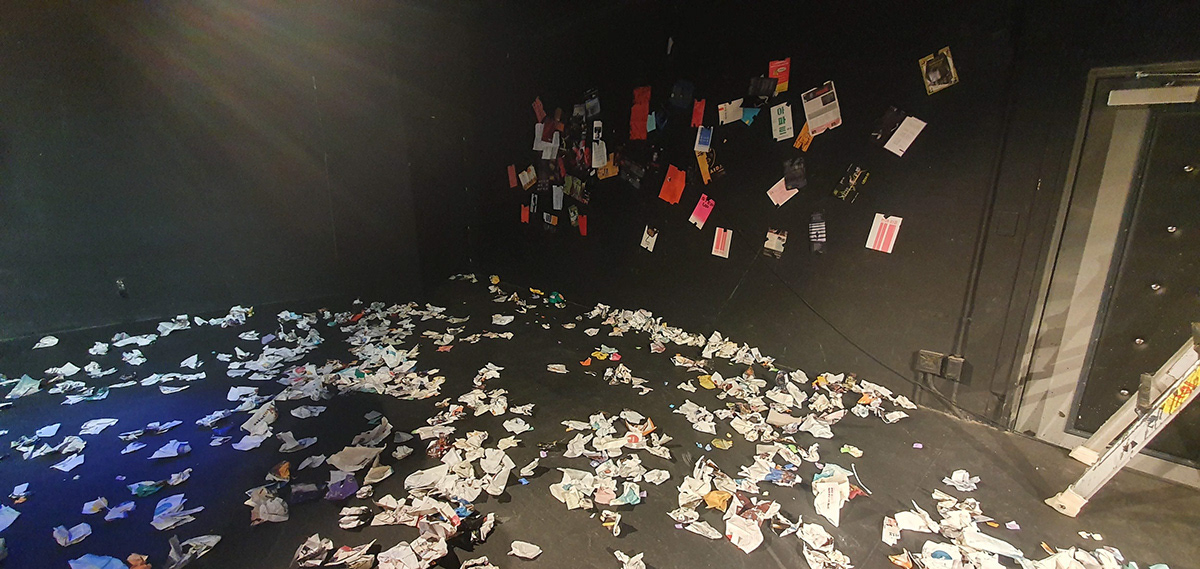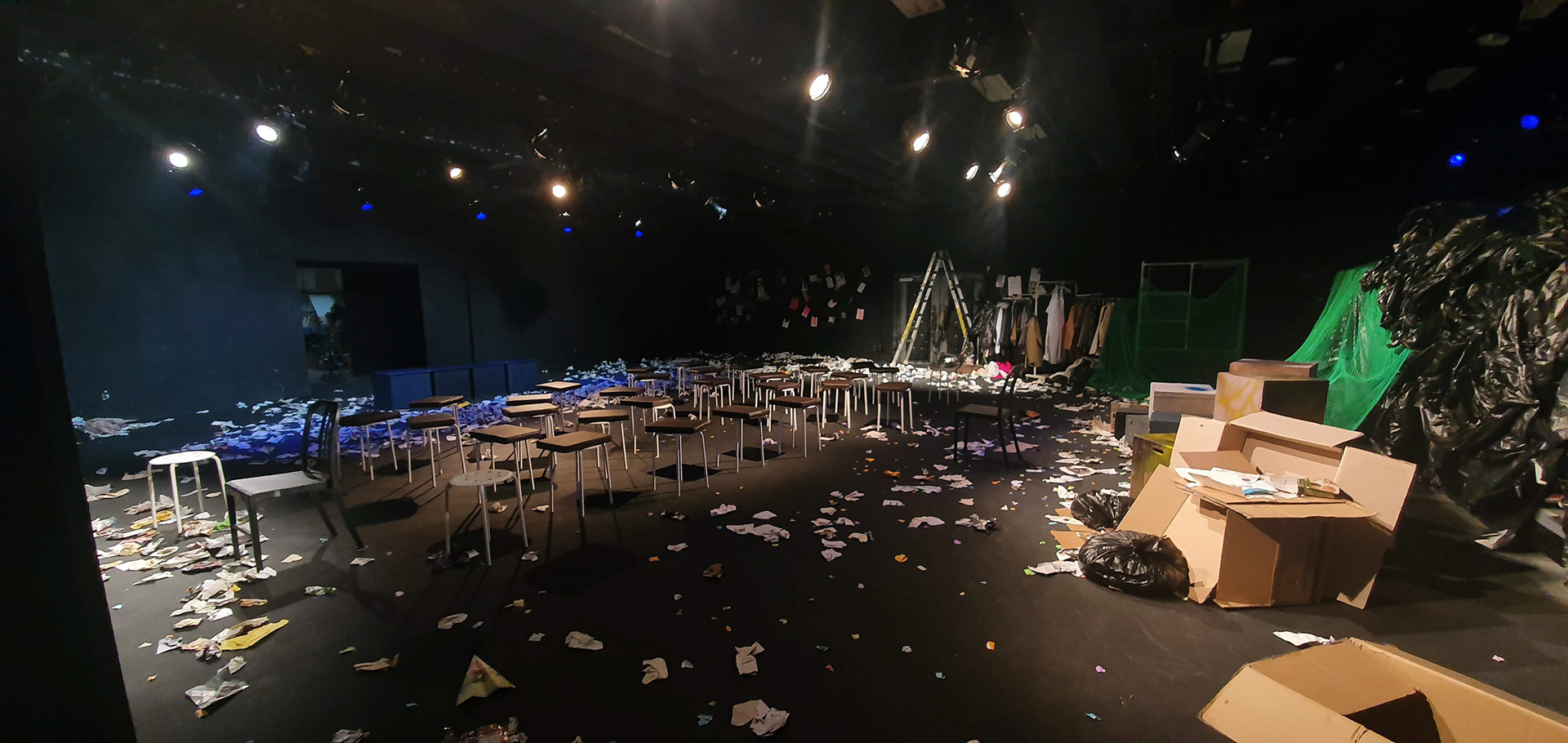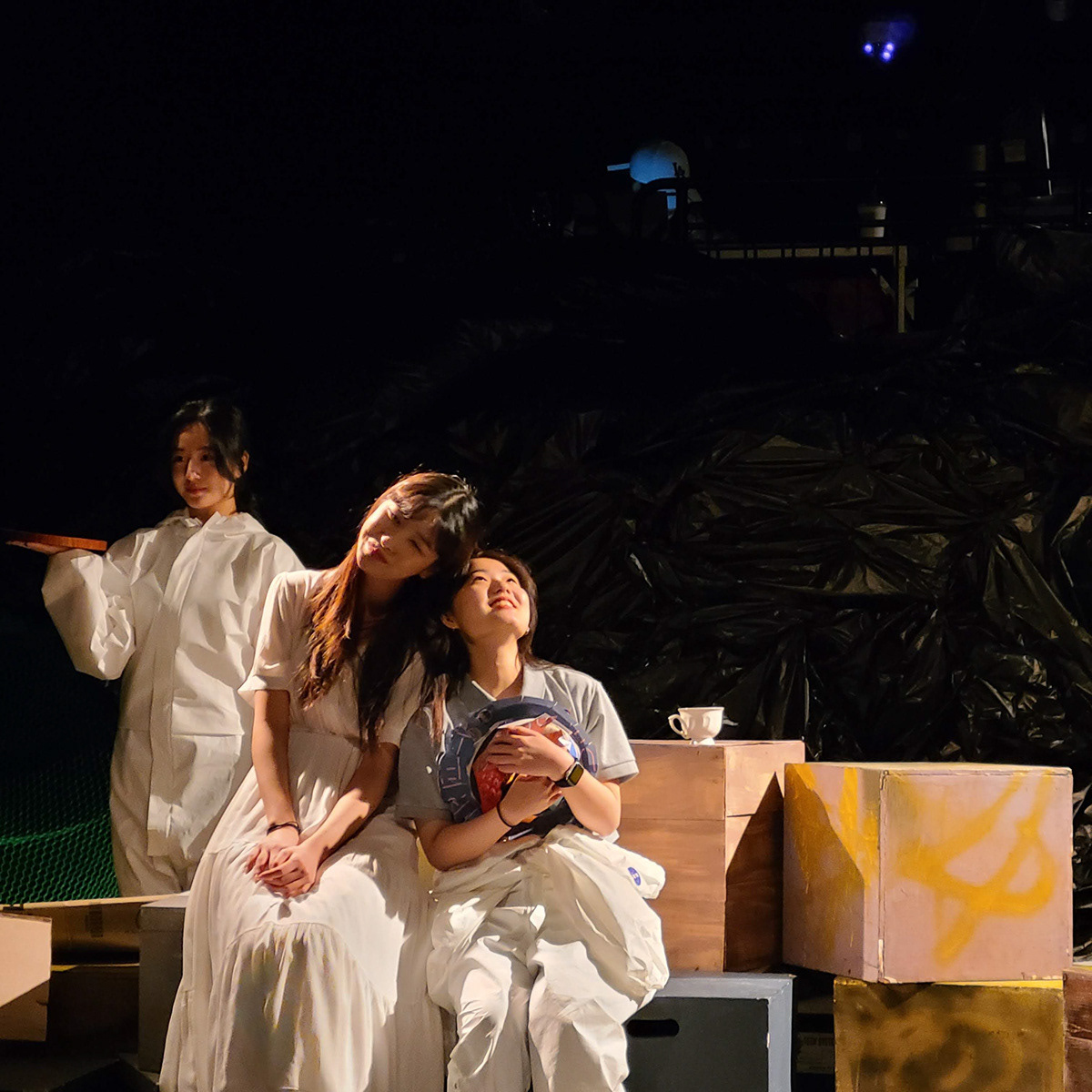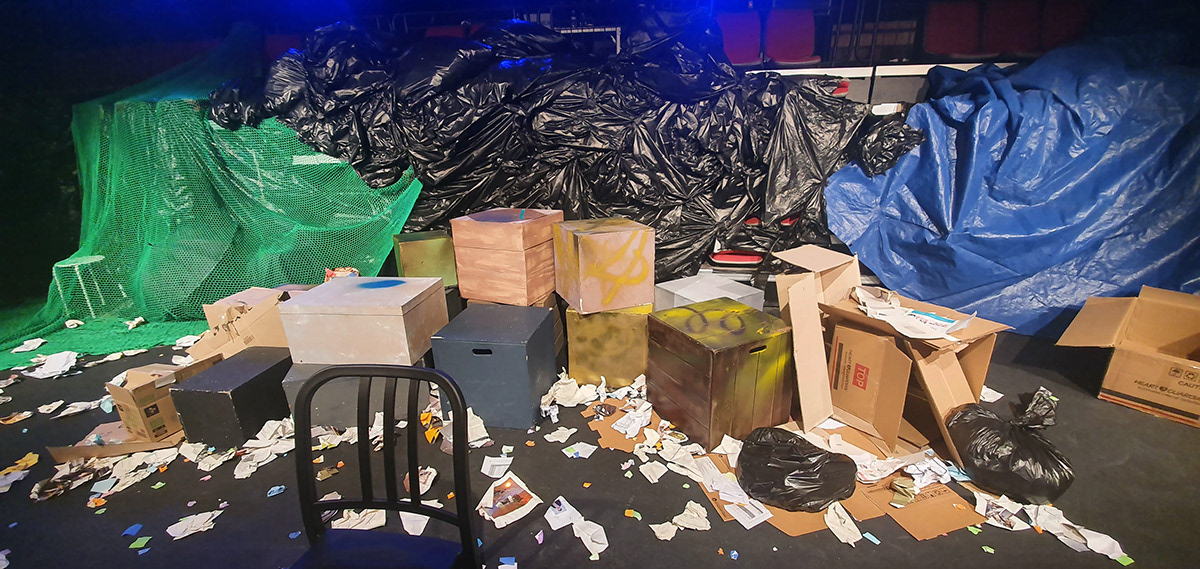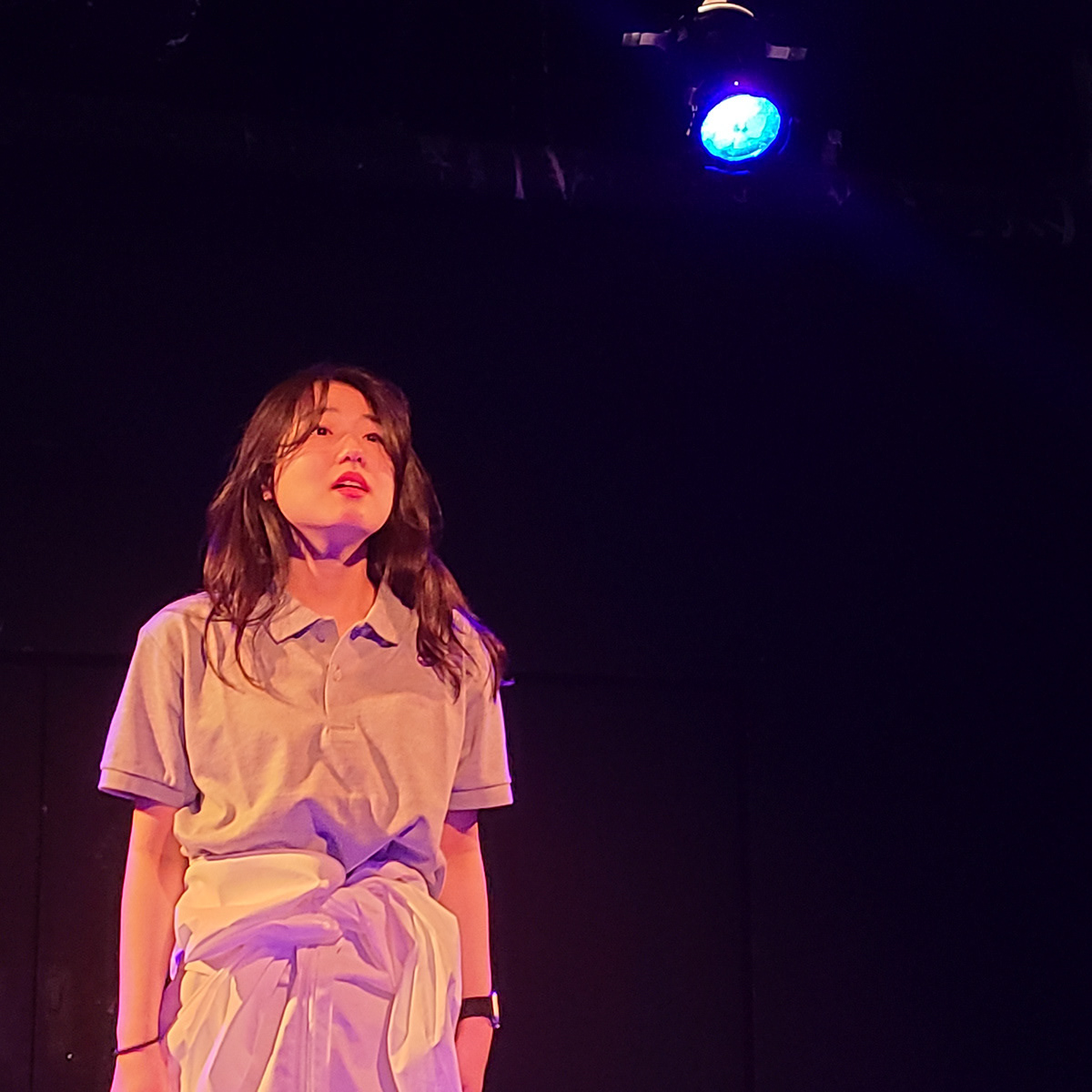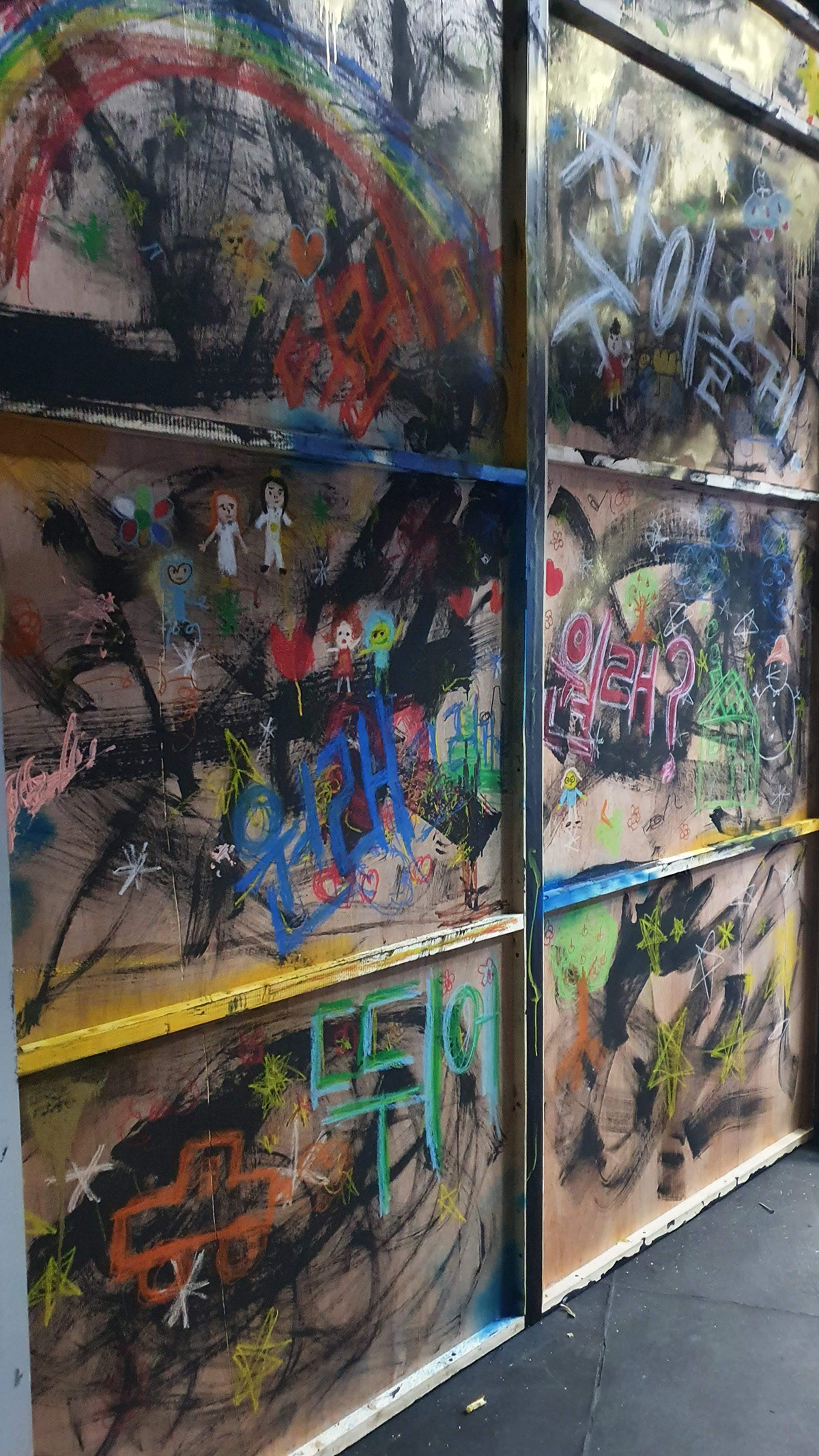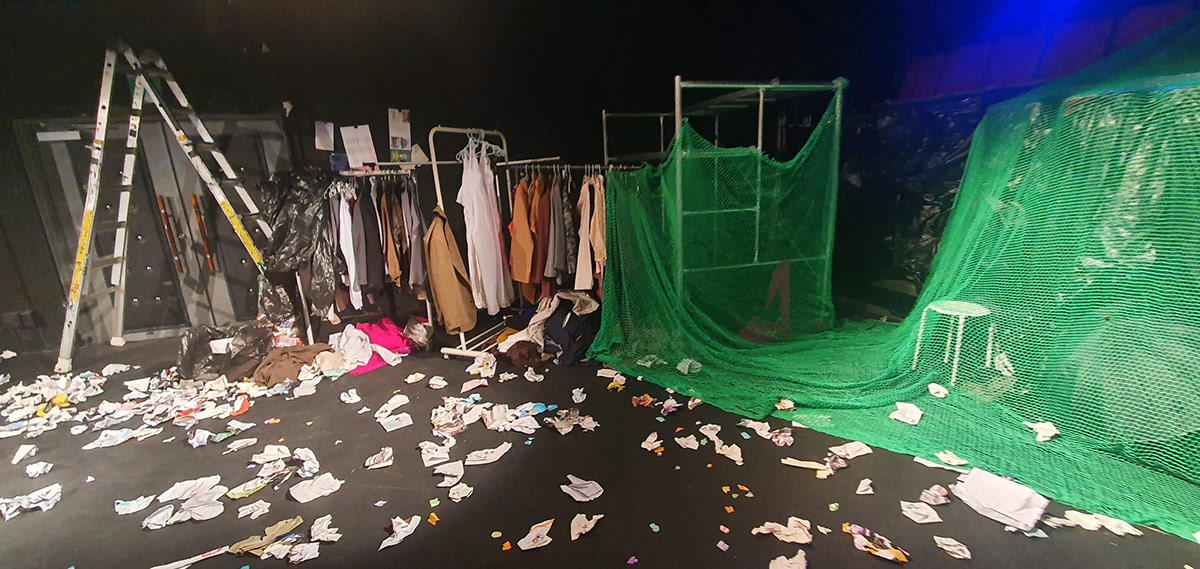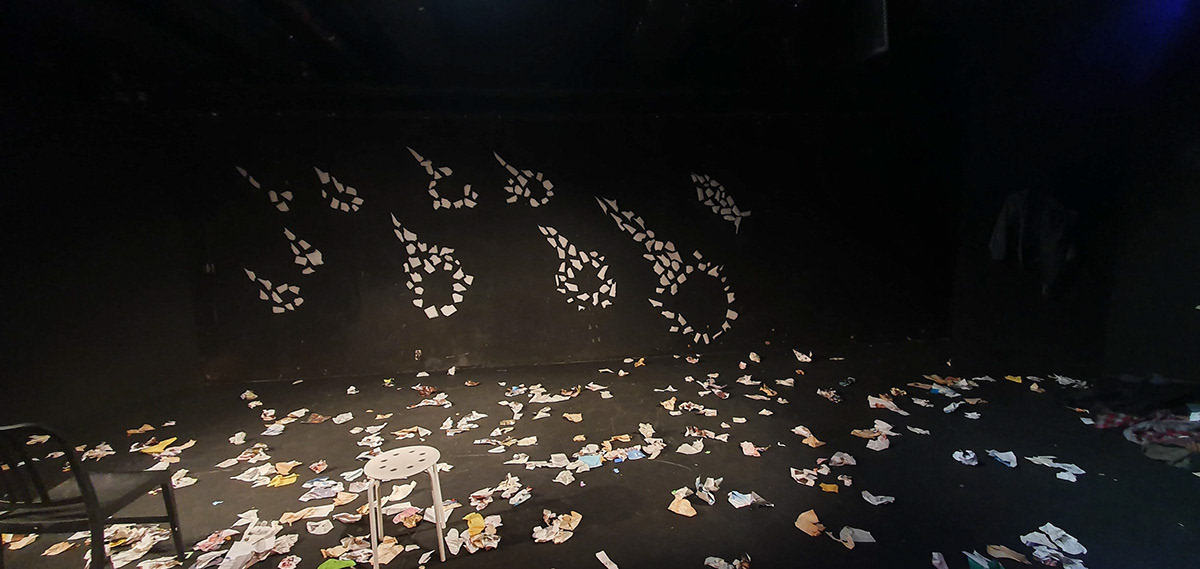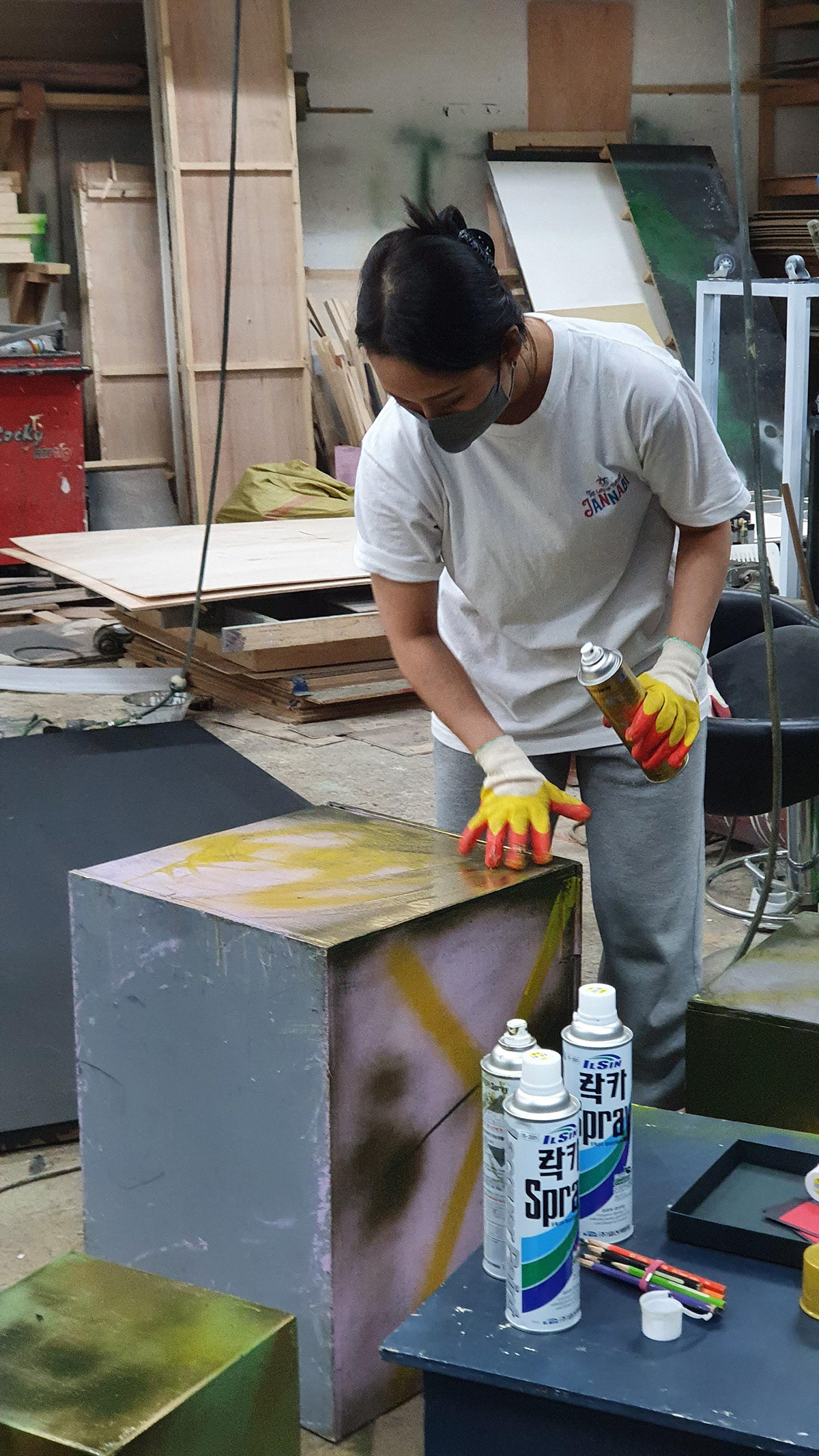Format / Medium Experimental Theatre; Immersive Staging (4-Sided Arena); Early-Phase VR Experiment
Presentation & Context 2021 Chung-Ang University Theatre (Seoul, Korea)
Key Roles Director, Composer
Synopsis
<At night I go to universe> starts from the perspective that encounters between people are akin to encounters between universes. Set against the backdrop of a universe on the brink of interplanetary collisions, the play unfolds as an omnibus drama consisting of four stories. Three episodes depict the moments leading up to collision, while one story portrays life after impact. Each episode explores human relationships through a warm lens, revealing how seemingly unrelated characters collide and form interconnected bonds. Ultimately, the play conveys a message of hope: that every universe emerges from collisions and even after destruction, space will be filled again.
Contribution & Conceptual Framework
As Director, I designed a highly unconventional staging configuration where the audience was seated centrally, and the performance space enveloped them in a 360-degree field. This spatial design was a deliberate choice to dissolve the proscenium, heighten the audience's sense of shared isolation, and create a truly immersive environment.
The actors’ movements were choreographed to utilize the entire theatre (front, back, and interstitial spaces), moving around and through the central audience, completely dissolving the boundary between performer and spectator. This forced varied perspectives and illustrated "varying degrees of relational distance."
As Composer, I created the soundscape to support this cosmic fantasy.
The production's scenography (set and props) was built entirely from 'trash.' This material choice represented the characters' "broken, polluted, and lonely" internal states. In the play's hopeful climax, this same 'trash' was lit to transform visually into a constellation of 'stars.'
Crucially, this spatial design was my first technical experiment in media-theatre fusion. The 360-degree, central-viewer layout was a literal, physical prototype of a 360-degree VR viewing experience—exploring how to direct live, embodied action for a viewer-centric, immersive field. This served as a foundational exploration into capturing and translating a live spatial experience into a new digital media format.



